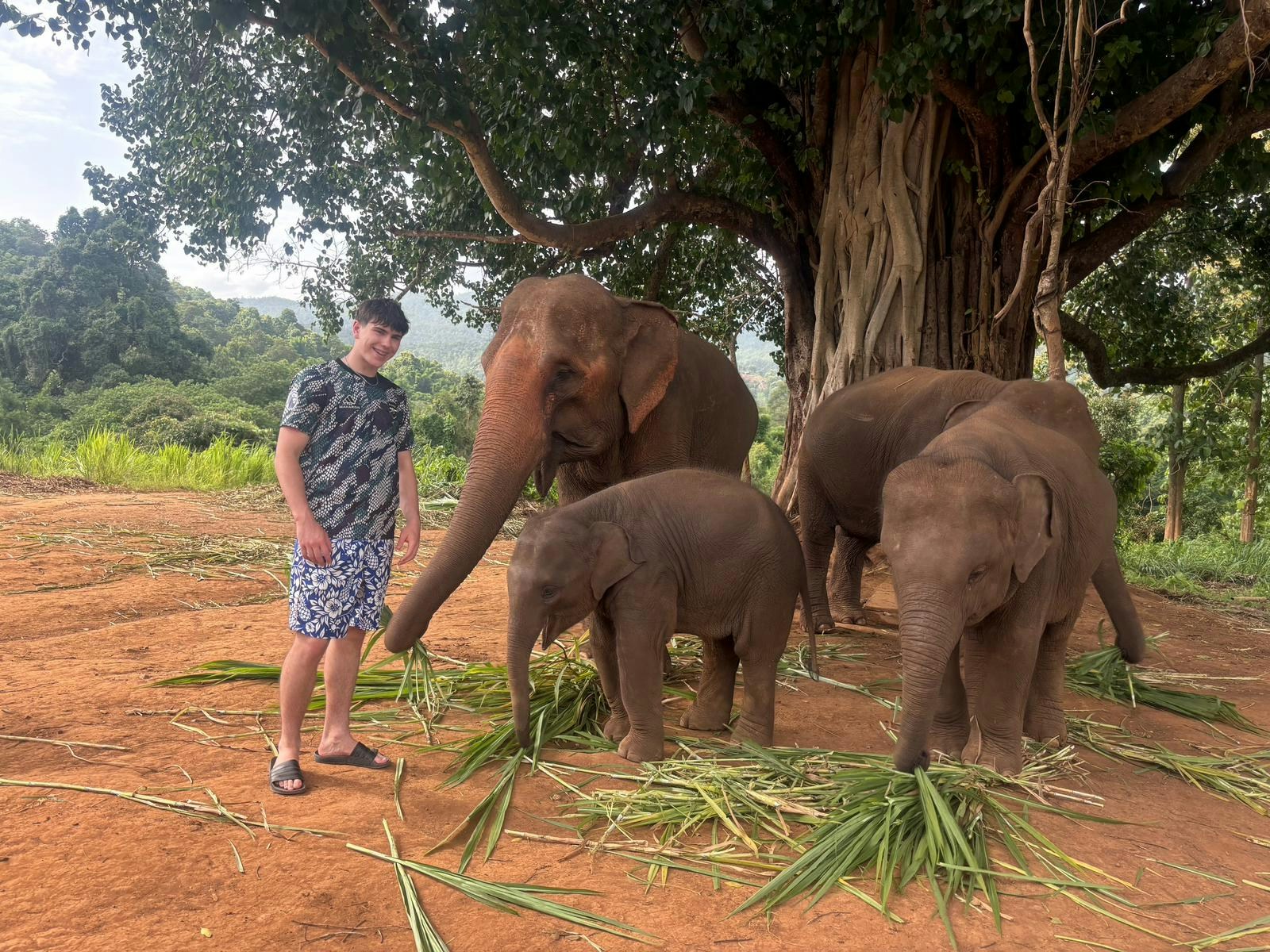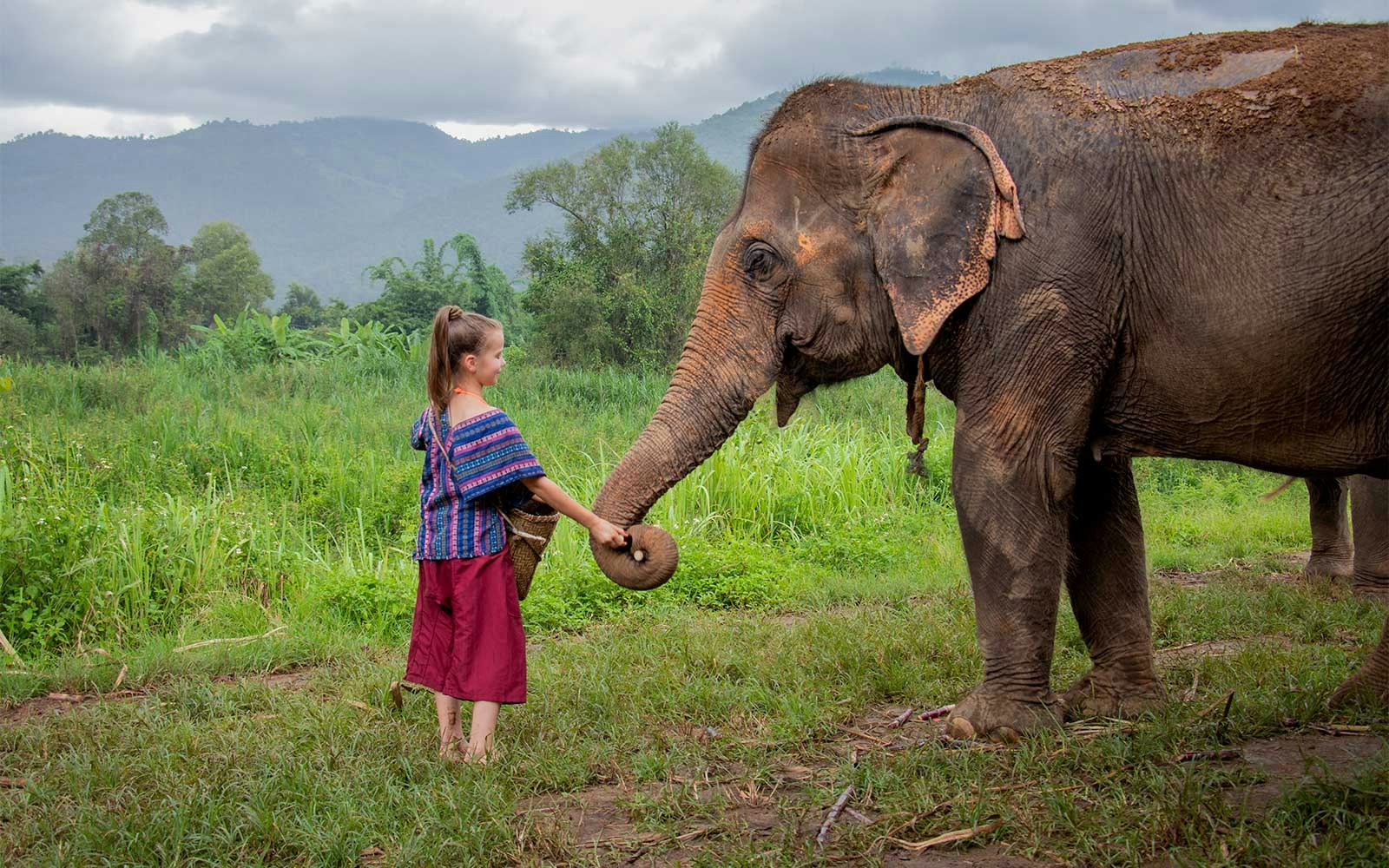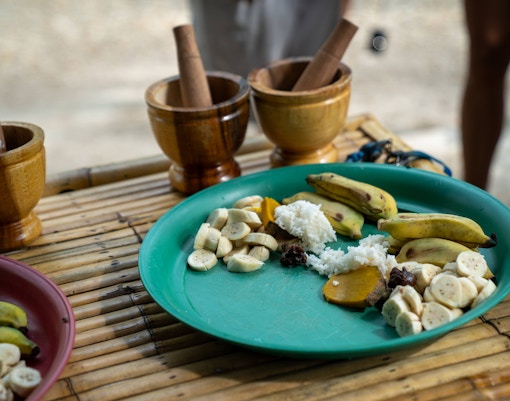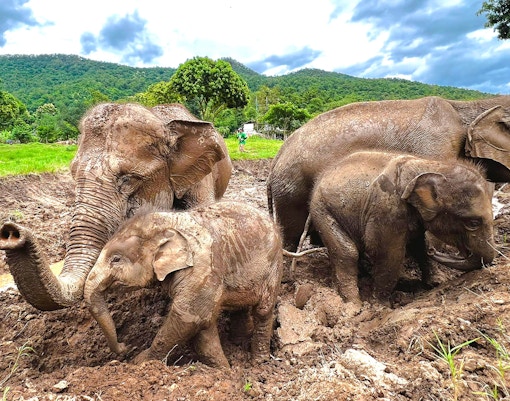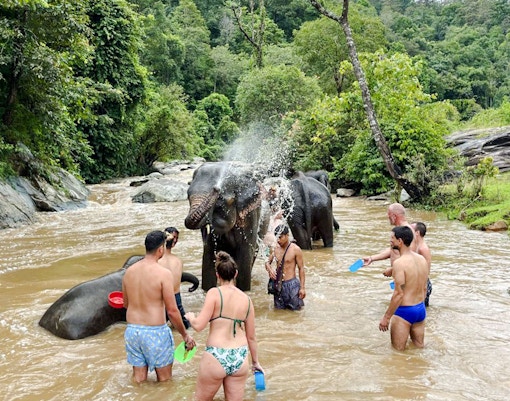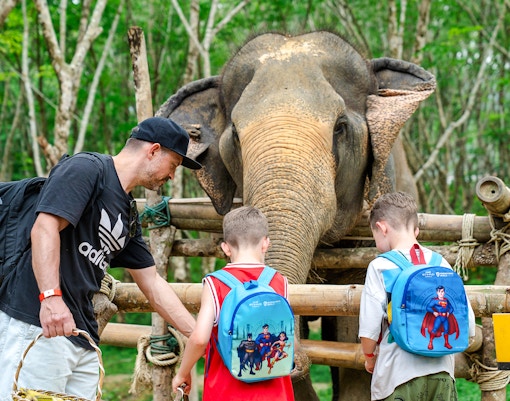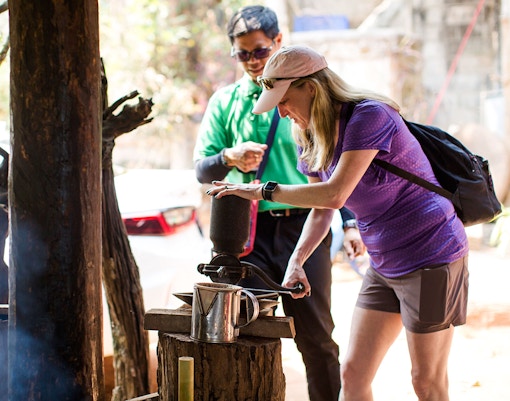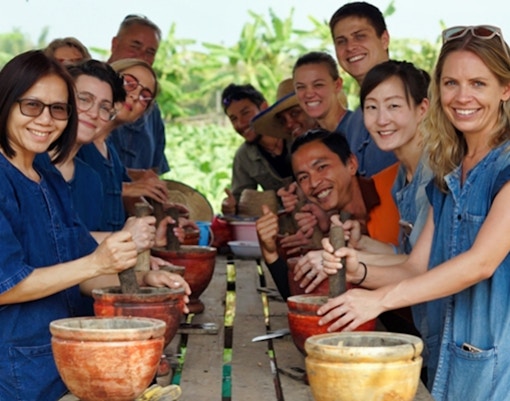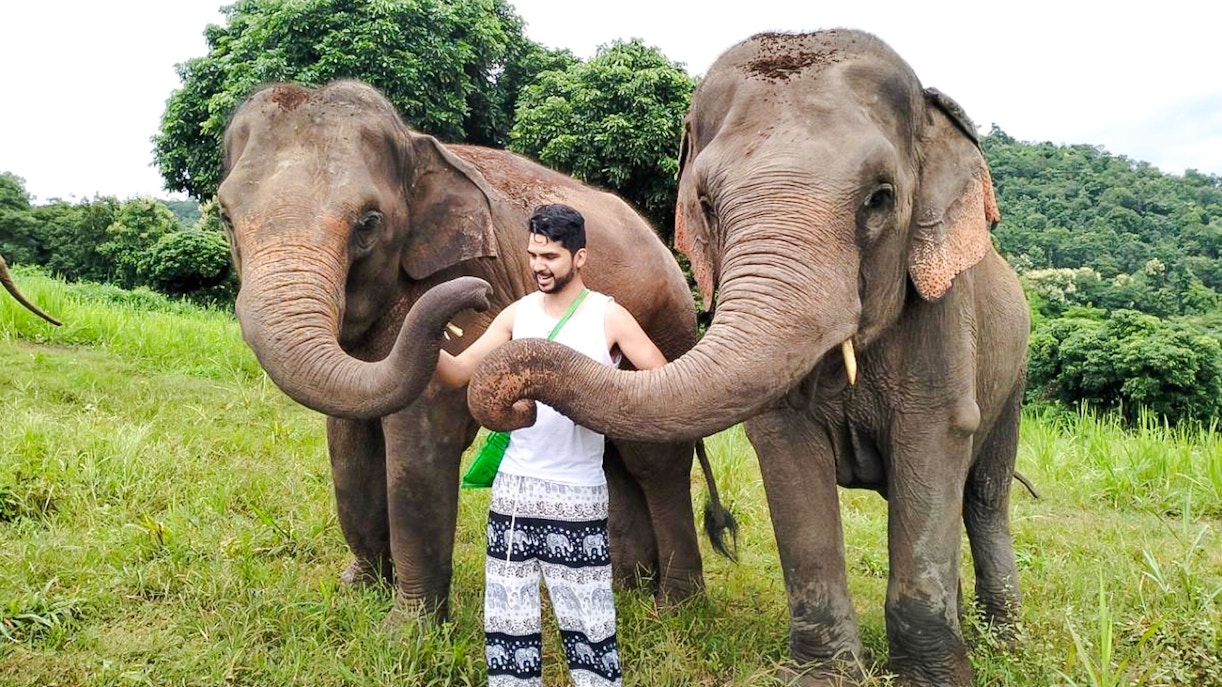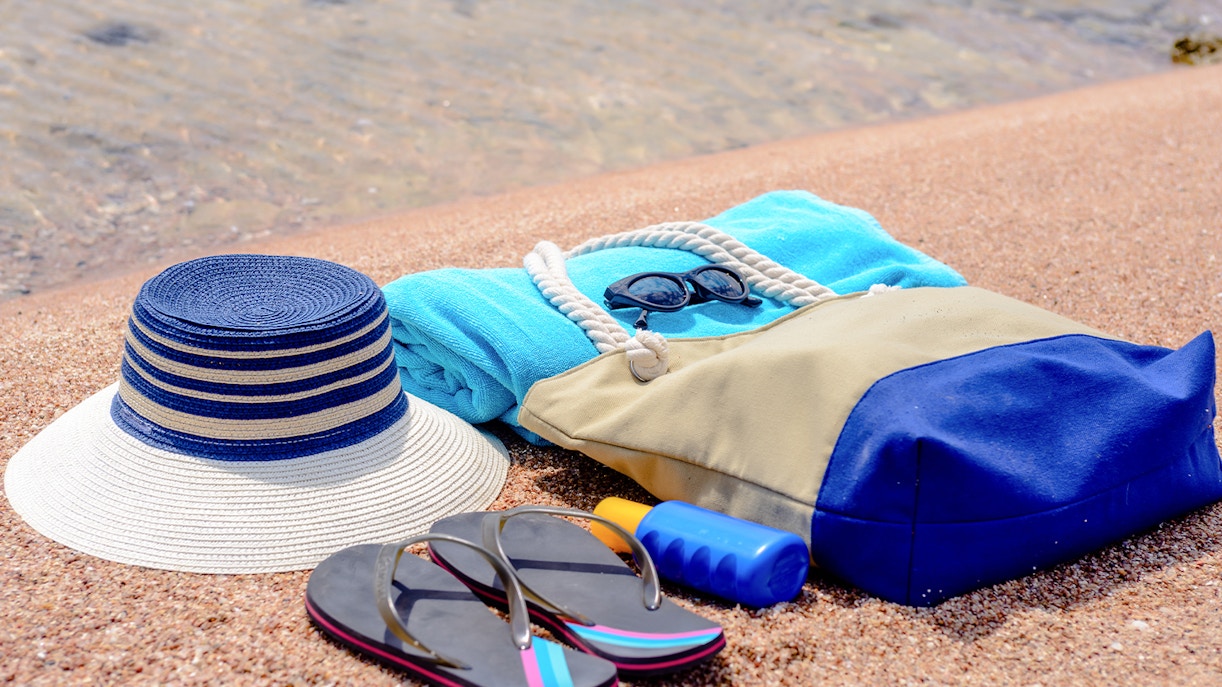Begin your visit by feeding the elephants fresh fruits like bananas and sugarcane. As you hand them food, guides share fascinating insights into their eating habits, personalities, and health. You’ll notice how gently they take food with their trunks — a humbling reminder of their intelligence and grace.
.svg?auto=format&w=156&h=48&q=90&crop=faces&fit=crop)
